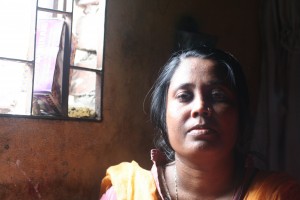 This debut post is being typed from Dhaka, the capital of Bangladesh, where I have been for the last 9 days conducting a labor assessment for USAID, the American government’s development agency. Our specific task is somewhat technical, but I have been visiting with many organizations and people, including groups of workers, many of whom are women.I have visited shrimp processing plant workers in their slum houses, garment workers organizing unions in Dhaka, and rural women who work on shrimp farms in their villages. I have posted some photos of these women at www.kevinkolben.com/photos, and have included one photo here.
This debut post is being typed from Dhaka, the capital of Bangladesh, where I have been for the last 9 days conducting a labor assessment for USAID, the American government’s development agency. Our specific task is somewhat technical, but I have been visiting with many organizations and people, including groups of workers, many of whom are women.I have visited shrimp processing plant workers in their slum houses, garment workers organizing unions in Dhaka, and rural women who work on shrimp farms in their villages. I have posted some photos of these women at www.kevinkolben.com/photos, and have included one photo here.
But the most moving visit for me happened last night, when I spent a couple of hours with an amazing group of garment workers in the southern port town of Chittagong. To reach the meeting point, we walked along the street of a Chittagong slum, which was bordered on one side by workers houses – the waste of which drained out onto the other side of the street – a river of wretched smelling sewage. We turned into a small dark alley, and entered the tiny shared residence of a group of workers. Taking off my shoes, I walked down a dimly lit, narrow hall. On my left were small rooms, and we were led to another small room, about 7 by 8 feet or so. The room was shared by four people. A married couple rented the room for about $20/month, which is a little less than the minimum wage for a garment worker. The couple slept on a bed, which took up about half the room, and two girls paid them rent to sleep on the floor next to the bed, separated only by a curtain. We sat on the bed, and about 20 girls crowded into the room and sat on the floor around us.
Because of the living conditions and close proximity, rates of TB and STDs are high, and the unmarried girls are sometimes sexually abused by the husbands living in the space. They spend long days at work, leaving at seven for work and returning 12 hours later. Their salaries generally max out at about 2700-3000 Taka with overtime, which is about $40/month – not so much even for Bangladesh. A 15 year old girl, but who looked younger, told us that she used fake age documentation to get a job in a shoe manufacturing facility. In the middle of our conversation the electricty went out, a common occurrence here, and a few of the women picked up hand held fans and used them to keep the sweaty visitors cool. Like so many workers I’ve visited with in many places around the world, this group had a remarkable spirit and sense of community despite the adversity, and they were incredibly gracious to invite us into their home. And when we asked them what they would like to do if they could do anything, they imagined working together as a group, doing embroidery, having their own business, exercising autonomy over their lives.

0 responses so far ↓
There are no comments yet...Kick things off by filling out the form below.
Leave a Comment